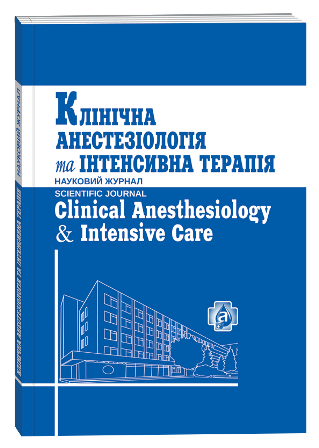THE EXPERIENCE OF INTENSIVE CARE UNIT FOR SEPTIC PATIENTS IN CE “DNIPROPETROVSK REGIONAL CLINICAL HOSPITAL NAMED AFTER I. I. MECHNYKOV”
Keywords:
sepsis, severe sepsis, intensive care unitAbstract
Introduction. The incident of septic patients increases worldwide by 8.7% annually, and mortality rate remains from 20 to 30 % with decrease by 0.47% annually from 2008 to 2013 after the Surviving Sepsis Campaign (SSC) Guidelines was introduced in clinical practice. The purpose of this study was to determine the role of special intensive care unit (ICU) for septic patients in management of severe sepsis and septic shock. Results. The introduction of ACCP/SCCM consensus conference 1992 recommendation, SCCM/ESICM/ACCP/ATS/SIS international sepsis definitions conference 2003, international sepsis forum program, SSC guidelines 2004, 2008, 2012, ESPEN guidelines for enteral and parenteral nutrition and other international guidelines was associated with mortality reducing from 31.7 to 16.94% in ICU for septic patients. Conclusion. This study supports the thesis that the experience of ICU for septic patients may be use for the formation of Guideline-Based National Program for management of severe sepsis and septic shock.
References
Ciomartan T. What is the best fluid for volume resuscitation in critically ill adults with sepsis? The jury is still out, but a verdict is urgently needed / T. Ciomartan // Crit. Care Med. – 2014. – N 42. – P. 1722–1723.
Van Zanten A. R. E. The golden hour of antibiotic administration in severe sepsis: Avoid a false start striving for gold / A. R. E. Van Zanten // Crit. Care Med. – 2014. – N 42. – P. 1731–1732.
Empiric antibiotic treatment reduces mortality in severe sepsis and septic shock from a guideline-based performance improvement program / R. Ferrer, J. Martin-Loeches, G. Phillips, T. Osborn // Crit. Care Med. – 2014. – N 42. – P. 1749–1755.
Dellinger R. P. Surviving sepsis campaign: international guidelines for management of severe sepsis and septic shock / R. P. Dellinger, M. M. Levy, A. Rhodes // Crit. Care Med. – 2013. – N 41 (2). – P. 580–637.







